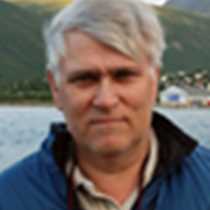Port Lockroy and Cuverville Island
Today and yesterday, we have been traveling in the wake of the famous Antarctic explorers, Gerlache and the French explorer Charchot. We started yesterday by sailing through the Lemaire Channel which was found and named by Gerlache during his Belgica expedition. We later visited Booth Island, the site Charcot wintered with his ship The Francais in 1904. The ice conditions made it impossible for us to reach further south to Petermann Island, the site Charchot used for his 2nd expedition to winter with the ship Pourqui Pas? in 1908.
Port Lockroy is a very sheltered bay on Wiencke Island and during Charchot’s expeditions he was forced to use it as a safe harbor. Being very much the first to sail and map and name the western side of the Antarctic Peninsula he grounded several times and Port Lockroy gave him a place to repair the ship.
As the whalers arrived to the area they also found the sheltered location and used the bay to tie up a factory ship to process the whales. As you land at the island you can still see the chains they used for anchoring their ships. Jougla Point is just across the bay from Lockroy, where whale bones from the era still stand high on the shoreline.
Operation Tabarine, named after a nightclub in Paris, was launched by the British as a secret program during the end of World War II. Argentina had, in 1942 moved into the area and by claiming land they challenged Britain’s interest. Britain was also afraid German submarines would use the Peninsula as shelter. In 1944 a ship was sent south to established Base A at Hope Bay, on the very northern tip of the Peninsula. Ice conditions made it impossible and they got pushed south along the west coast and finally ended up at the sheltered bay, Port Lockroy to establish BASE A.
After WWII the base was turned into a scientific station operated by FIDS, as the race between Britain, Argentine and also Chile for the same territory was on. The station ran to about mid 1960 and was closed. In the early 1990s the British Antarctic Heritage Trust decided to turn it into a museum.
After breakfast we split into several groups, to visit Jougla Point and whale bones and to visit the museum. The museum is a time capsule from the 1950’s and this summer manned by four nice ladies. The British flag is of course flying high and your post cards are stamped “British Antarctic Territory.” Although the Antarctic Treaty states all territorial claims are to be withheld, everyone here is in different ways still trying to maintain their interest. Of course Port Lockroy is one of the few opportunities to give all “shopaholics” a good change to support British Antarctic Trust to be able to continue running this remarkable site. Plenty went back to the ship with field bags.
During lunch we repositioned the ship through scenic waterways and reached Cuverville, named by Gerlache after the French Navy vice-admiral who was able to get him some French support for his expedition in 1897-1898. Here we had options to either land and hike up as far we were able to reach and maybe slide down, make a Zodiac cruise between endless shaped icebergs or enjoy a silent cruise with our fleet of kayaks.
At 1800 the captain lifted anchor and through the evening we continued to enjoy spectacular sceneries as we slowly made it out for the Drake Passage through a nice calm Dallman Bay. Slowly we were feeling the ship start to heave as we were soon out in the open ocean. Next time we disembark the ship it will be in South America.




